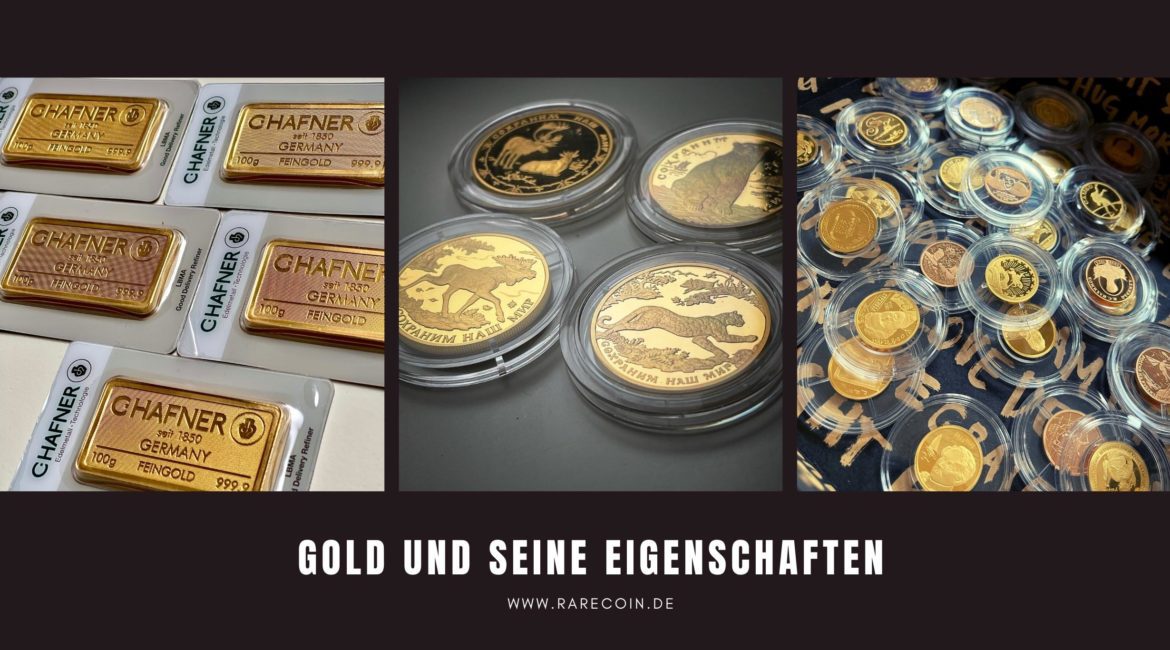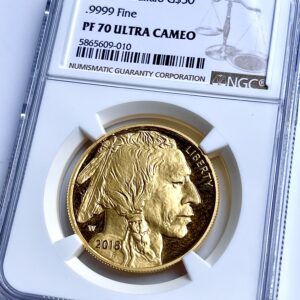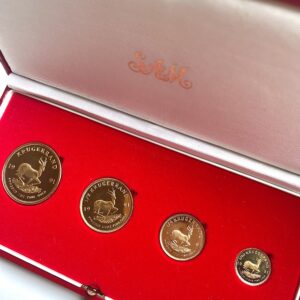Gold (lat. Aurum), Au, chemical element, atomic number 79, atomic weight 196.9665; a heavy metal of characteristic yellow color. It consists of a stable isotope, Au.
Gold was the first metal known to man. Objects made of gold were found in cultural layers of the Neolithic period. In the ancient Egyptian, Mesopotamian, Indian and Chinese civilizations, between the 3rd and 2nd millennium BC mined for gold. Even then, jewelry and other items were made of gold. The alchemists called gold the “king of metals” and designated it with the symbol of the sun. The discovery of ways to transform base metals into the coveted gold was the main goal of alchemy.
Physical and chemical properties
Gold is a soft, ductile, viscous metal, it conducts heat and electricity remarkably well and is very resistant to various chemical influences.
For more than five thousand years, gold has been used in the jeweler’s art for the production of jewelry, ritual and palace dishes, as well as for the gilding of clothing, often colored with admixtures of other elements in different colors and in combination with precious and decorative stones, pearls, diamonds, etc..
In the beginning, gold was used only for jewelry, and only after several thousand years gold became a means of saving and collecting.
Is there chemically pure gold?
Chemically pure gold does not exist in the world. Gold contains numerous impurities. Refining is carried out for the extraction of pure gold. There is no technology that guarantees 100% purification of gold from all impurities. Even the purest gold in standard bank bars contains 99.99 percent gold and 0.01 percent impurities.
How much gold is in a gold coin?
Fineness is the percentage of gold in a coin or product, for example in the jewelry industry the most popular 585 fineness is considered 58.5% gold content and the rest is admixtures. A gold coin is a coin that is predominantly or entirely made of gold. Most gold coins minted since 1800 are 90-92% gold (22 karat), while most of today’s gold bullion coins /gold bullion coins are pure gold, such as the Britannia, the Canadian Maple Leaf, and the American Buffalo. Alloy gold coins, such as the American Gold Eagle and the South African Krugerrand, are typically 91.7% gold, with the remainder copper. The admixed copper increased the scratch resistance of the coin.
The 1 oz. American Eagle gold coin, for example, with a face value of $50 has a diameter of about 32.70 mm, contains one troy ounce of gold and weighs 1.0909 troy ounces (33.931 g).
The American Eagle gold ½ oz. coin, face value $25, has a diameter of approximately 27.00 mm, contains 0.5 troy ounces of gold, and weighs 16.966 grams.
How many different sizes of gold coins are there?
Gold coins range in size from 1/25 ounce (oz.) to the Australian Nugget, which weighs a full kilogram (32.15 troy ounces). By far the most popular is the size of 1 troy ounce / 1 oz. which probably account for more than 75% of the total gold bullion coins traded.
Are there differences between gold collector coins and bullion coins?
The bullion coins are designed for an investment period of many years. A coin with a term of 5 years is considered a medium-term investment, while a period of more than five years is called a long-term investment. They are issued in millions and are not covered by certificates.
The level of awareness of the brand determines the interest in the product: liquidity, number of potential investors, etc. The value of these coins is approximately equal to the price of gold.
Collector coins are produced in limited editions. They are usually issued for a specific event or occasion. They are slightly or much more expensive than bullion coins with identical characteristics because of the collector’s premium.
Maybe also interesting for you: https://rarecoinv4.wpengine.com/blog/differences-between-sammlermuenzen-und-anlagemuenzen/
Gold content in jewelry
Jewelry is not made of pure gold, because it is not practical. Gold is soft and such jewelry is impractical to use – it can be scratched, dented and deformed. Therefore, pure gold alloys with various alloying agents are used for the production of various pieces of jewelry, which, on the one hand, unlike admixtures, improve the physical properties of the metal and, on the other hand, provide the opportunity to give the gold a desired color. Copper, silver, palladium, nickel, zinc, indium and germanium are used as gold alloying agents.
The percentage of gold in the jewelry alloy thus determines its properties, i.e. its grade (German: “Punze/Stempel”, from Latin “Probo”: to examine, evaluate, recognize). For example, the 375 hallmark means that a piece of jewelry is 37.5 percent gold. A 585-carat item is 58.5 percent gold, while a 750-carat item is 75 percent gold. A 958-carat piece is 95.8 percent gold. The system is adopted in most countries of the world. In this metric system, the hallmark is indicated by the number of metal parts in 1,000 parts of the alloy ligature.
Of course, the price of the item depends largely on the hallmark. This means that the more precious metal is included in the alloy, the more expensive the item will be, as the additives used are much cheaper than gold and do not affect the price.
The items must be analyzed by inspection control (testing and hallmarking) and stamped with an inspection stamp. Jewelry made of precious metals is marked with a hallmark determined by the alloy. Gold coins do not have to be stamped, although the testing of their alloys is very strictly regulated and controlled.
Besides hallmarking, the jewelry is also stamped by the manufacturer.
The jewelry is distinguished not only by its hallmark, but also by its color. Gold color and carat are not related. In a jewelry store you can see jewelry of the same 585 standard, but in different colors. Four basic colors of gold jewelry alloys are widely used: Red, yellow, white and even green – the most original color. Silver-based green gold is the most in demand in the world today.
History of green gold
Archaeologists believe that the history of green gold begins on the island of Crete. The ancient greenish gold comes from the depths of the first and second millennium BC. This gold alloy is called electrum. It was used for the manufacture of, for example, jewelry. Electrum is a type of native gold which contains gold, silver and some copper. As a rule, the silver content was between 10 and 40%.
Of the objects made of ancient green gold, the coins of King Croesus – the staters – have survived to this day. This antique coin gold has a characteristic yellow-green color. The coins were minted from electrum in the ancient state of Lydia in the 6th century BC.
The unusual green color of the gold is due to the ligature, that is, other metals that are part of the gold alloy. Silver and palladium give pure gold a light green color. Potassium and nickel color the gold olive. Rubidium and cadmium give the “sun metal” a deep green color. Cadmium, however, is toxic. Its use in gold alloys is banned in the European Union. If a person inhales the vapors, he or she can ingest toxic substances in amounts that can even be fatal. When used in jewelry, it is more dangerous to make than to wear. However, cadmium also accumulates in the body and is carcinogenic.
Alloys of 585 and 750 green gold:
Light green: gold (58.5%), silver (38%) and palladium (3.5%) or gold (75%) and silver (25%);
Olive green: gold (58.5%), silver (30%), copper (8%) and nickel (3.5%);
Deep green: gold (58.5%), silver (30%), copper (8%) and rubidium (3.5%)
Yellow-green: gold (75%), silver (15%) and copper (10%).
Is gold jewelry a better money investment than gold coins, gold bars?
When you buy gold jewelry, you are also making a kind of monetary deposit. But as we know, when we buy a gold chain or a ring, we also pay for the work of the craftsman. And when you sell it, this portion is not included in the price. Only the weight of the jewelry is taken into account.
If you have questions about gold coins as an investment or want to sell your gold coins, we look forward to hearing from you!
Discover the new additions to our gold coin collection in the current range!
-
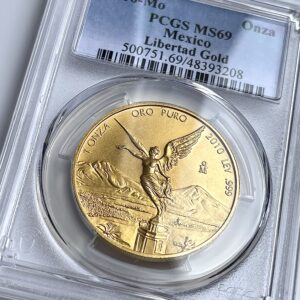
Mexico – 2010 – Libertad – Gold coin 1 oz – PCGS MS69
3.150,00 €plus shippingDelivery Time: approx. 2-3 days (excluding Saturdays, Sundays and public holidays) -
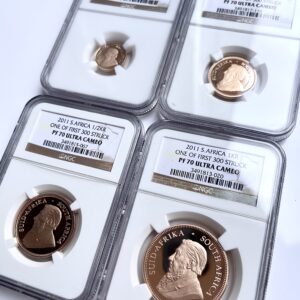
Krugerrand – 2011 – Set – One of First 300 – 4 Gold Coins Proof – NGC PF70 UCAM
5.500,00 €plus shippingDelivery Time: approx. 2-3 days (excluding Saturdays, Sundays and public holidays) -
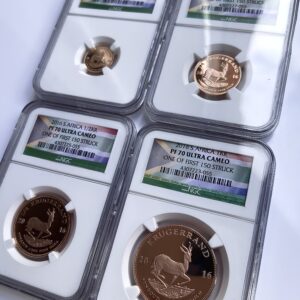
Krugerrand – 2016 – Set – One of First 150 – 4 Gold Coins Proof – NGC PF70 UCAM
5.500,00 €plus shippingDelivery Time: approx. 2-3 days (excluding Saturdays, Sundays and public holidays) -
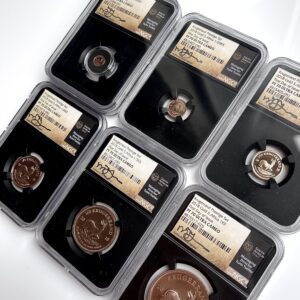
Krugerrand – 2018 – Set – First Day of Issue – 6 Gold Coins Proof – NGC PF70 UCAM
5.750,00 €plus shippingDelivery Time: approx. 2-3 days (excluding Saturdays, Sundays and public holidays) -
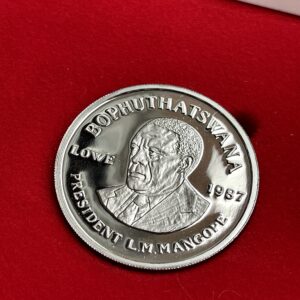
Bophuthatswana – 1987 – 10 years of independence – platinum – 1oz – with original case and certificate
2.195,00 €plus shippingDelivery Time: approx. 2-3 days (excluding Saturdays, Sundays and public holidays) -
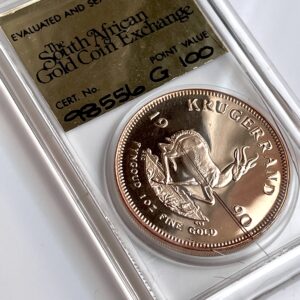
South Africa – Krugerrand – GRC – 1990 – SAGCE PoV 100 – 1oz Proof Gold
3.250,00 €plus shippingDelivery Time: approx. 2-3 days (excluding Saturdays, Sundays and public holidays) -
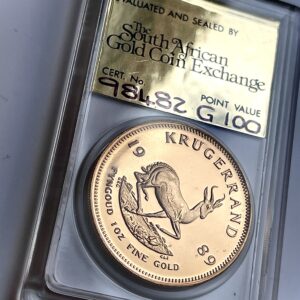
South Africa – Krugerrand – GRC – 1989 – SAGCE PoV 100 – 1oz Proof Gold
3.250,00 €plus shippingDelivery Time: approx. 2-3 days (excluding Saturdays, Sundays and public holidays) -
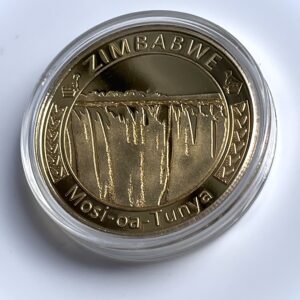
Zimbabwe – 2022 – Mosi-oa-Tunya – 1oz Proof Gold
3.150,00 €plus shippingDelivery Time: approx. 2-3 days (excluding Saturdays, Sundays and public holidays)

